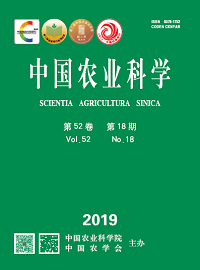【Objective】 The foxtail millet grain quality under different types of climate and soil, was determined in this study, in order to discover the main natural factors on the quality of millet, and to reveal the law in quality change, and to provide technical guidance and theoretical support for the rational distribution of high-quality millet.【Method】 This experiment was carried out at Qinxian and Changzhi, which have different types of climate and soil, during 2012 to 2017. The soil samples at the depth of 0-60 cm were exchanged between two places so that each experimental site has two soil types at the same time. The same millet cultivars were sowed at this two sites with the same fertilization. The soil nutrition, seventeen kinds of amino acids, protein, fat, amylose, VB and mineral nutrients such as K, Cu and Zn in millet grain were determined. The data during 2013 to 2017 was collected and analyzed using a split split-block design with interannual data as duplicates, climate types as the main area, soil types as the main fissure area, and other factors as the secondary fissure area.【Result】 There are obvious differences in millet quality under different climatic conditions. The results showed that the contents of most amino acids (except methionine, alanine and cystine), total amino acids, crude protein, VB2, K, Cu and Zn of millet grain in Qinxian were higher than in Changzhi, in contrast, the content of fat in Qinxian was lower than in Changzhi. Moreover the grain in Qinxian had higher gel consistency but lower pastification temperature and less amylose in compared with the grain in Changzhi. In addition, the yield of millet from red soil is significantly higher than that from cinnamon soil. There are obvious differences in millet quality from different types of soils. The millets harvested from red soil contained more methionine, glycine, cystine, isoleucine, magnesium, iron and copper than that from cinnamon soil. The millets harvested from cinnamon soil contained more amino acids, protein, gel consistency, starch, VB1, calcium, potassium, phosphorus, sodium, zinc content than that from red soil. Moreover, the content of selenium of millet from cinnamon soil is significantly higher than that from red soil, but the content of millet fat from red soil was significantly higher than that from cinnamon soil.【Conclusion】 Different types of climate and soil have effects on grain quality, millet palatability and the accumulation of mineral. Qinxian climate benefits the accumulation of most amino acids, protein and VB in millet grain. Also the grain harvested in Qinxian had higher gel consistency but lower pastification temperature and less amylose in compared with the grain in Changzhi. Therefore, the millet in Qinxian has good quality and palatability. Moreover, red soil benefits the accumulation of magnesium, iron and copper, but cinnamon soil benefits the accumulation of amino acids, protein and VB1. In addition, the yield of millet from red soil is significantly higher than that from cinnamon soil, but millet from cinnamon soil are selenium-rich millet. In short, climate factors affect millet palatability, and soil factors affect millet quality and the accumulation of various mineral elements.









